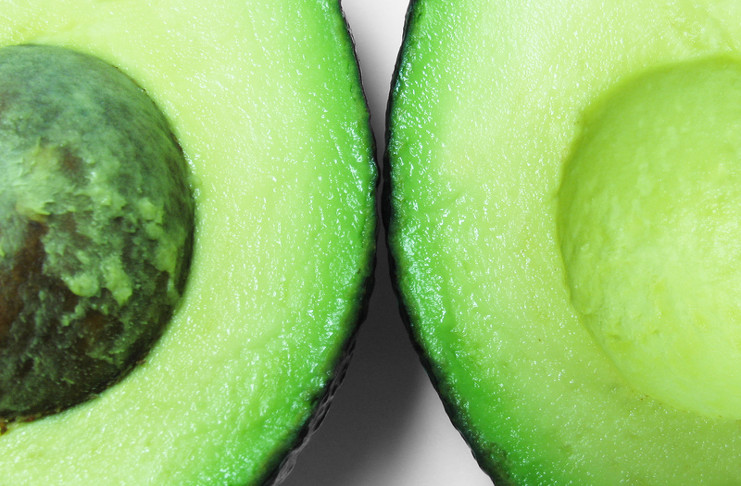You’ve all heard about the health benefits that come from eating different types of seafood. They’re loaded with protein, and many contain the highest natural levels of healthy omega 3 fatty acids found in nature. Not to mention, crustaceans like oysters and mussels contain healthy levels of vitamin B12 for people who prefer not to eat animals believed to have a soul; a distinction not attributed to non-mammalian seafood.
However, contrary to what many health gurus online and off will tell you, all is not well in the world of seafood. These creatures live in water, and as all of us know by now: all the world’s water is dangerously polluted. Mercury is a big one to be wary of, but there are billions of tons of many other dangerous chemicals in global waters that can hurt us over time.
Mercury dangers of eating seafood
Mercury is a toxic substance found in the Earth’s crust naturally, within coal and other fossil fuels like crude oil. Unfortunately, a number of industrial processes — many that are still used today — allow mercury to escape into the atmosphere. Mining of all kinds is a big issue, as mercury is released whenever deep large-scale operations are being done.
The burning of coal and iron ore from the start of the Industrial Age up until today are also a big part of the current mercury problem facing the planet. As are byproducts from making Portland cement, and the burning of trees and oil infected with the substance.
To be fair to the human race, uncontrollable catastrophic events such as volcanic eruptions and earthquakes also release mercury into the environment. These events only make up for about 30% of mercury contamination found in the environment.
Waterways affected most
Sadly, the waterways of the world get the brunt of the mercury runoff, as mercury is expelled into the atmosphere, by us or by nature, then redistributed back into the water table. All fish are generally afflicted with mercury, and pass it on to all predators (including humans) who eat them.
Mercury disrupts our brain, peripheral nervous system, liver, kidneys, and most other organs in the body. It can also exacerbate chronic health problems like heart disease, fibromyalgia, Alzheimer’s and Parkinson’s. This toxic metal was once used to make cheap mercury fillings (called “amalgam”) in days gone by, but this is rarely done in developed countries today.
The very worst part about mercury is that it doesn’t break down very easily in nature, and certainly not in the human body. It’s lipophilic, meaning it concentrates itself in all fatty tissues of the body, including the brain! The Agency for Toxic Substances and Disease Registry in the United States has proposed a daily limit of 0.47 grams per day as the upper limit of mercury consumption.
Many health sources state that 2 or 3 servings (140g cooked) of fish per week is fine, even recommended. However, those same sources rarely tell us what types of seafood are preferable. For the most part, it’s best to look at seafood from the following views when making a meal choice:
1. What type of fish is it? (Ie., ocean vs freshwater; large vs small; bottom dweller, etc.)
2. Where was the fish sourced from? (Ie., ocean vs freshwater; wild vs farmed).
Fish farming not as great as you thought
Farming may be touted as more sustainable, but there are a number of negatives that come from seafood farming. One is the environmental impact. Most large-scale fish farming is done in oceans and lakes. Meaning nets are placed in large swaths of area to contain the farmed fish, killing wild fish and inhibiting their natural movement in a given body of water.
Next, farming involves introducing more pollutants (other than the mercury already present) into the water such as antibiotics to prevent disease, pesticides to kill invading organisms, and toxic metals such as copper sulfate which is used to keep the nets that contain these fish from tangling. A strong argument has been made that only pollution-tolerant fish typically survive in a farming scenario. In fact, Atlantic salmon, once believed of the healthiest fish one can eat, become seriously toxic in a farmed environment.
Not to mention, the vast majority of commercial fish farming takes place in countries with poor health standards across the board, such as many parts of Asia and Southeast Asia. Fish farming doesn’t have to be this way but standards are up to the manufacturer and their budget. Meaning you’ll have to pony up more cash to find an ethical supplier with strong standards.
Here are 10 seafood choices you need to avoid
1. Swordfish
I hope that if swordfish is to be found on your bucket list, it’s to catch one of these amazing creatures and not to eat it. Swordfish are huge predators. They live for a long time and are loaded (literally) to the gills with mercury. Women and children aren’t even recommended eating it. While men are supposed to limit its consumption to a small portion once monthly.
2. Eel
Eel is a mainstay in many Asian kitchens and is what unagi is made of in sushi restaurants. Sadly, this essential fish species is also among a select few others are considered a major part of the “filter” that keeps waterways all over clean and clear. Knowing what we know about the chemicals in our water, it shouldn’t be a surprise these fish are prone to holding onto contaminants like PCBs, and flame retardant chemicals that disrupt metabolic function. Not to mention high levels of mercury.
3. Shark
Sharks aren’t scary just because of the way they look. It’s because they eat anything with a pulse in their environment. Sharks consume everything from small fish to large mature dolphins. In other words, they eat the biggest creatures in the ocean and thus contain more mercury and other dangerous contaminants than the smaller predators that they, themselves eat. They’re also among the most endangered fish in the ocean, often getting caught in commercial fishing nets and tossed back overboard like garbage.
4. Tuna
Some sources will tell you that Pacific caught tuna species are healthier. Others will state that bluefin is the only one we should avoid. Then, there’s the canned vs fresh/frozen debate. The fact is, tuna are massive predators. Predators that live for years, starting out eating plankton, then moving onto bigger and bigger prey as they mature. Mercury, PCBs, and other toxic chemicals are very prevalent in tuna of all kinds, regardless whether it be canned or otherwise.
5. Store-bought Salmon
This one has pained me to say this. As I’ve previously recommended salmon, particularly Atlantic salmon, as a mainstay in a healthy diet. It’s one of the richest sources of omega 3s and other healthy fats. Unfortunately, wild salmon are in serious danger now from over-fishing. For this reason, salmon fishing is banned in most areas. Most salmon you’ll buy in the store is farmed, regardless if they’re Atlantic, Pacific, or freshwater. Even wild-caught salmon is highly-contaminated and it’s hard to say if this fish breed will ever recover — or be healthy for regular human consumption. If you can fish salmon in your area, stick to younger fish under 5 pounds.
6. Imported “Catfish” (and grouper and sole)
Catfish of any kind is a big concern for anyone who didn’t catch the horned mud-dweller straight out of their backyard creek, river, or lake. Common labels include: basa, tra, swai, grouper, sole, and striped catfish. Dr. Axe refers to these varieties as the “filthiest fish on the menu.” Grouper and sole aren’t even catfish, but farmed catfish are often found in their place and purposely mislabeled. Worse, catfish are large bottom-dwellers and eat smaller bottom-dwelling fish. They can live in the most inhospitable environments filled with contamination and poor water quality before landing on your plate.
7. Store-bought Shrimp
Considering most Americans eat roughly 4 pounds a year, this is likely to come as a blow to many of you. Unless you’re catching it yourself, or have a seafood dealer you trust, it’s most likely the shrimp on your plate comes from a farm overseas. These farms use literal slaves to peel shrimp so you don’t have to. They also use pesticides like formalin (“formaldehyde”), malachite green, rotenone, and many other neurotoxins that cause a slew of health issues including cancer. Most of these shrimp are treated with 4-hexylresorcinol to prevent loss of the red color they contain in their flesh. All the aforementioned chemicals are known to mimic estrogen levels in both sexes.
8. Tilapia
Tilapia is one of the most farmed fish on the planet. They’re easier to contain in a farm scenario than larger, arguably more popular white-fleshed fish like halibut. Worse, long-chain omega 6 fatty acid levels are higher than that found in bacon, beef, and even doughnuts! The biggest benefit of eating fish, despite high mercury levels, is the omega 3 fatty acids that they contain, which actually help to balance the dangerously high omega 6 levels we often take in from processed foods.
9. Atlantic Flatfish
Atlantic flatfish including halibut, sole, and flounder. There are plenty of moral and ethical reasons not to eat these fish. I’ll leave it to you to look into the way they’re often treated (discarded) by commercial fisherman. However, the fact remains that these deep ocean predators eat seveeral fish on the bottom of the ocean food chain that contain higher levels of mercury. As they get bigger, they eat larger predatory fish that contain larger levels of mercury.
10. Orange Roughy
Orange roughy are severely over-fished as a major restaurant and home seafood delicacy. They’re among the world’s dirtiest fish to eat because they take years to develop into a weighty fish worth eating. In fact, they live well over 100 years. They’re full of contaminants and many major chain restaurants like Red Lobster won’t even serve them.
Conclusion
It isn’t likely that choosing healthy fish to eat is going to get any easier as the years go on. I’ve focused mainly on mercury as the big danger in this article. Mercury has a half-life of 18 years in the body. In order for levels to lower in nature, humans would have to cease all activities that cause mercury’s release into the atmosphere and waterways.
With that said, there are a few species that are still known to contain lower levels of mercury and other toxins:
• Pollock
• Anchovy
• Herring
• Oysters
• Mussels
• Sardines
• Shad
• Brook Trout
• Arctic Char
These fish are safer due to the environments they prefer, fish and insects they prey on, and short lifespan. I hope this article helps you make healthier seafood choices for you and your family in the years to come.
Here’s to your continued good health!




